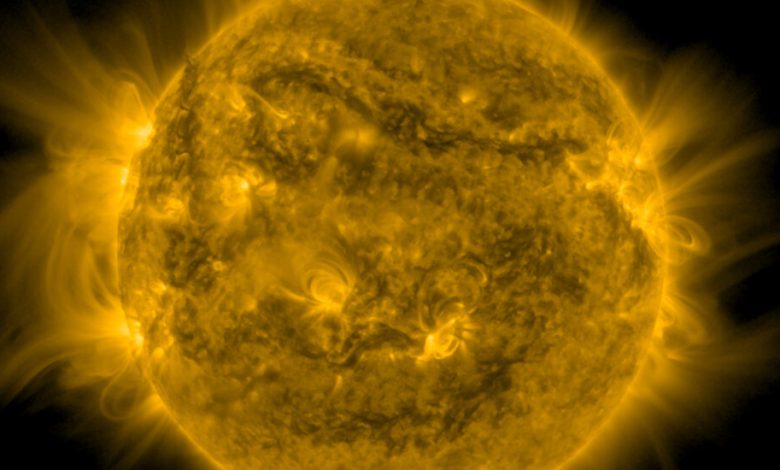Northern Lights Could Appear Farther South in U.S., Forecasters Say

A powerful geomagnetic storm could set off a colorful display of the northern lights this weekend, appearing in some sections of the United States where they are not usually visible, weather officials said on Friday.
The National Weather Service issued a geomagnetic storm watch for Saturday and Sunday after the agency said it observed multiple coronal mass ejections from the sun on Thursday and Friday.
The storm watch came less than a day after the Weather Service recorded the largest solar flare since 2017.
The flare, the Weather Service said, temporarily disrupted radio communications for some aircraft. Officials said it was “likely one of the largest solar radio events ever recorded.”
On Friday, the agency said it had detected a coronal mass ejection coming from the same eruption on the sun that produced the flare. A coronal mass ejection describes the massive expulsion of billions of tons of plasma and magnetic field from the sun.
“It’s almost like the sun shot a magnet out into space, and that magnet is going to interact with Earth’s magnet, and those two magnets are going to come together,” said Bill Murtagh, program coordinator for the National Oceanic and Atmospheric Administration’s Space Weather Prediction Center.
“And needless to say, there will be a reaction,” he added. “And that reaction is the geomagnetic storm.”
These storms can produce captivating streaks of green or reddish light in the skies called auroras. In the Northern Hemisphere, they are known as aurora borealis, or northern lights.
The lights tend to reveal themselves in the far-flung corners of the Northern Hemisphere, such as in Canada and Scandinavian countries. The stronger the storm, Mr. Murtagh said, the farther south the lights can be seen.
This weekend’s storm is expected to be mild to moderate, according to the watch. The lights could come into view farther south in Iowa, Maine, New York and Washington.
Geomagnetic storms have been more prevalent lately, Mr. Murtagh said. Earlier this year, places as far south as Arizona and central California were able to view the northern lights.
That’s because the solar cycle — in which the sun’s magnetic field flips every 11 years — is approaching its maximum phase, known as solar maximum. It is reached at the halfway point of the 11-year period, and is when the sun is most active.
“The potential to see aurora is going to be much higher over the course of the next two years,” Mr. Murtagh said.
The current cycle began in 2019, and had been in what scientists call a solar minimum, when solar activity is at its lowest.
While geomagnetic storms offer a chance to soak in celestial beauty, they are also a concern for officials because the storms pose a threat to the power grid and other critical infrastructure, Mr. Murtagh said.
A minor or moderate storm, as is expected this weekend, can cause the power grid to fluctuate and, depending on its duration, damage transformers, the Weather Service said. It can also interfere with satellites and slightly affect the accuracy of GPS.
But more severe storms can have profound effects, with the ability to knock out large sections of the power grid, leading to disastrous blackouts.
“We have created a vulnerability in this nation like no other because of our reliance on technology for everything we do,” Mr. Murtagh said. “We recognize that threat is there.”



